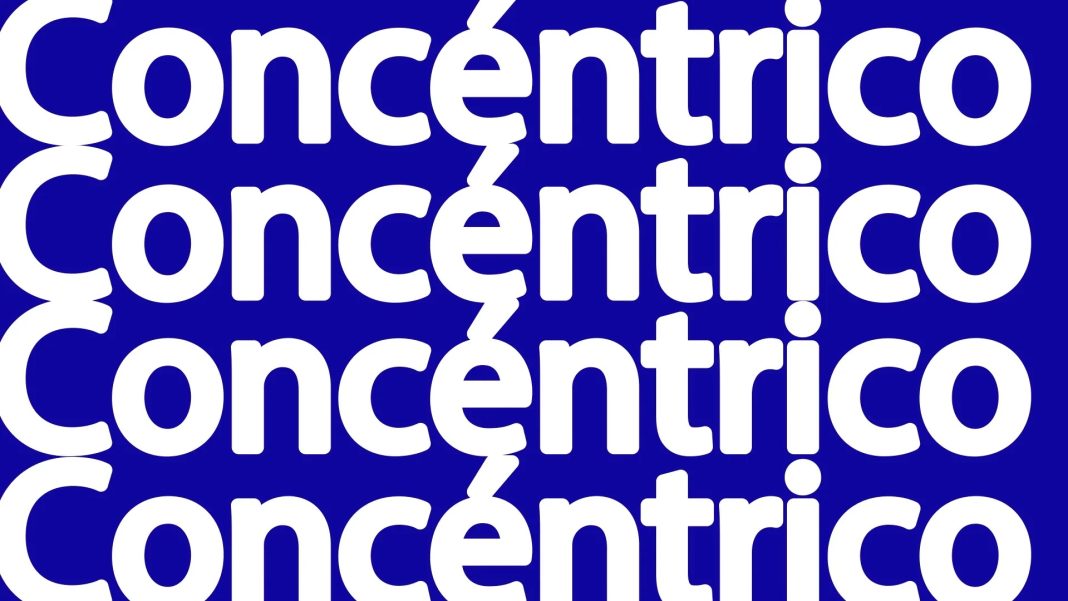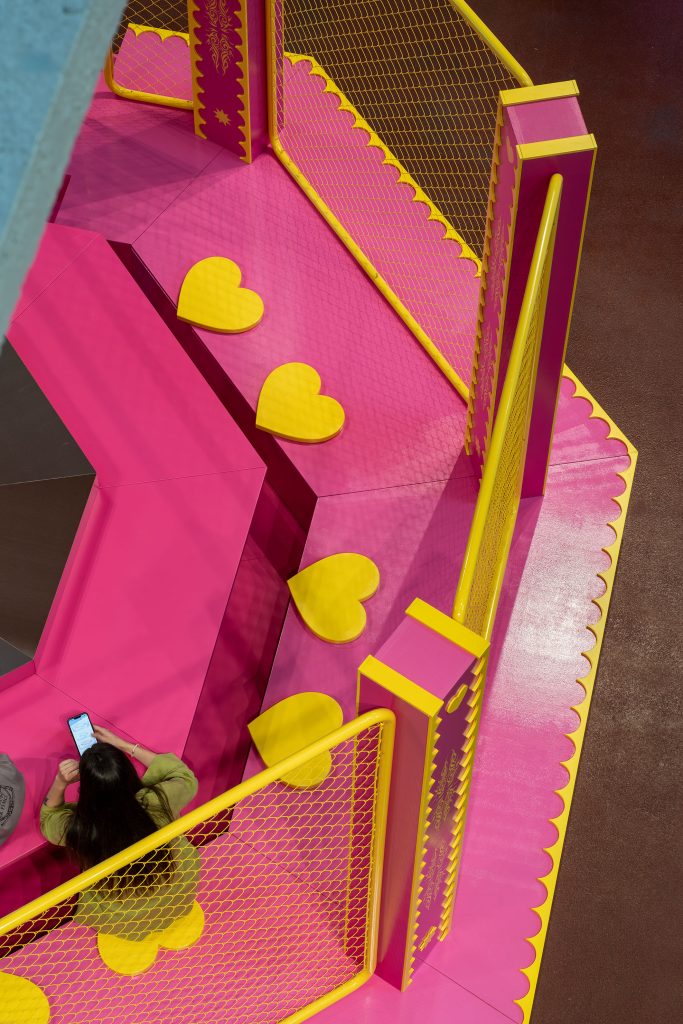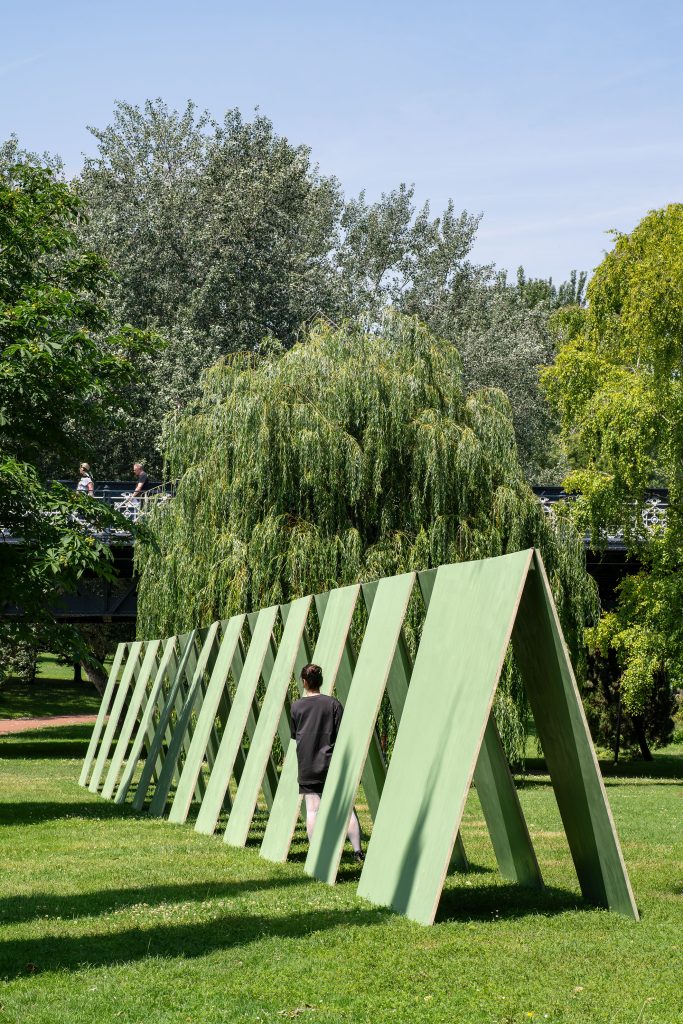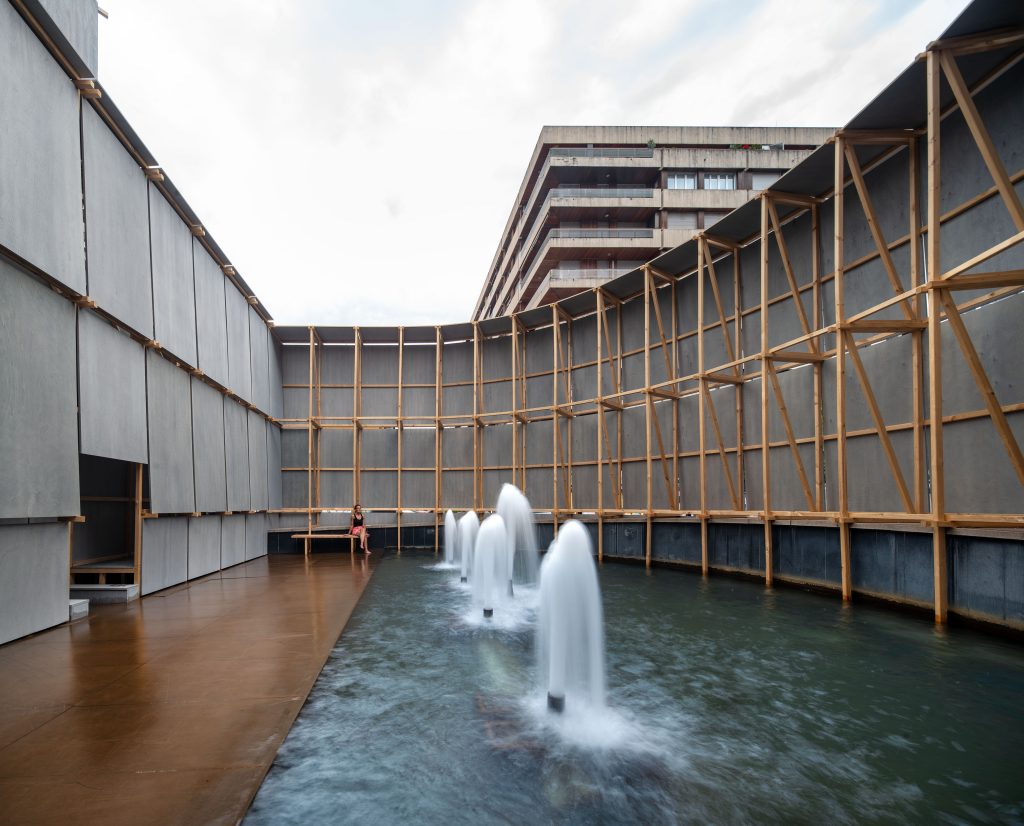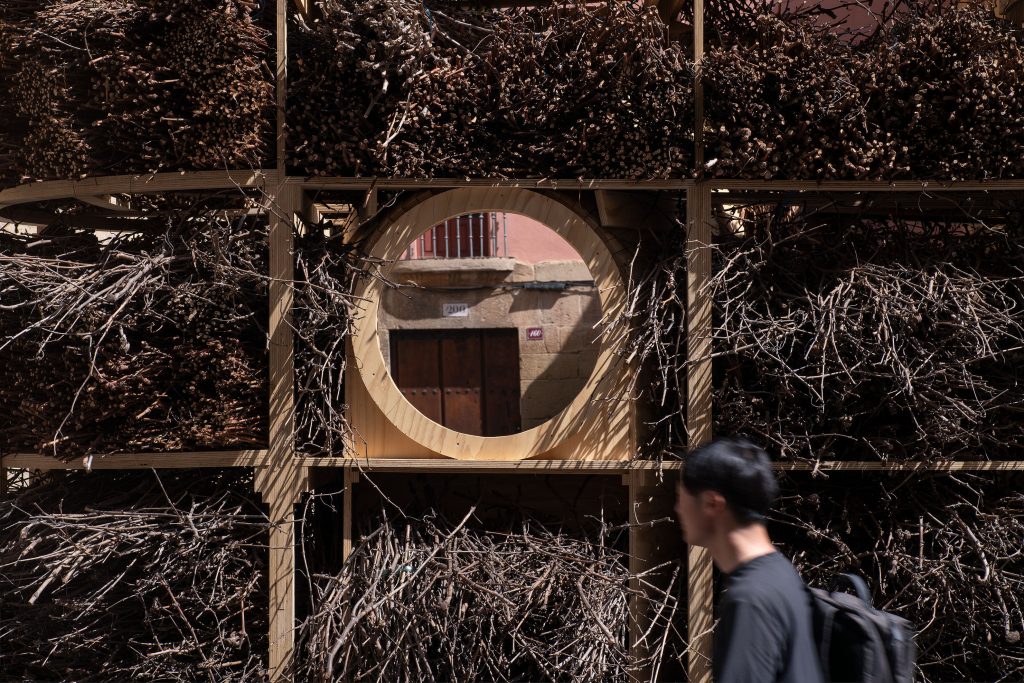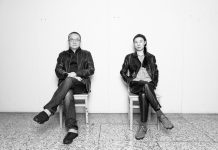From June 19 to 24, 2025, a special edition of Concéntrico took place in Logroño, marking a decade of exploring public space. Since its first edition in 2015, the International Festival of Architecture and Design has transformed the city into an urban laboratory to imagine new ways of inhabiting shared urban spaces. Over the past ten years, Concéntrico has brought together hundreds of international designers, with the goal of activating urban spaces through design and architecture—spaces that would otherwise remain dormant.
This year, the curatorial theme focused the Festival around four main topics: food, summit, water, and the social and ritual processes capable of activating collective spaces.
I interviewed Javier Peña Ibañez director of Concéntrico to understand more about this festival.
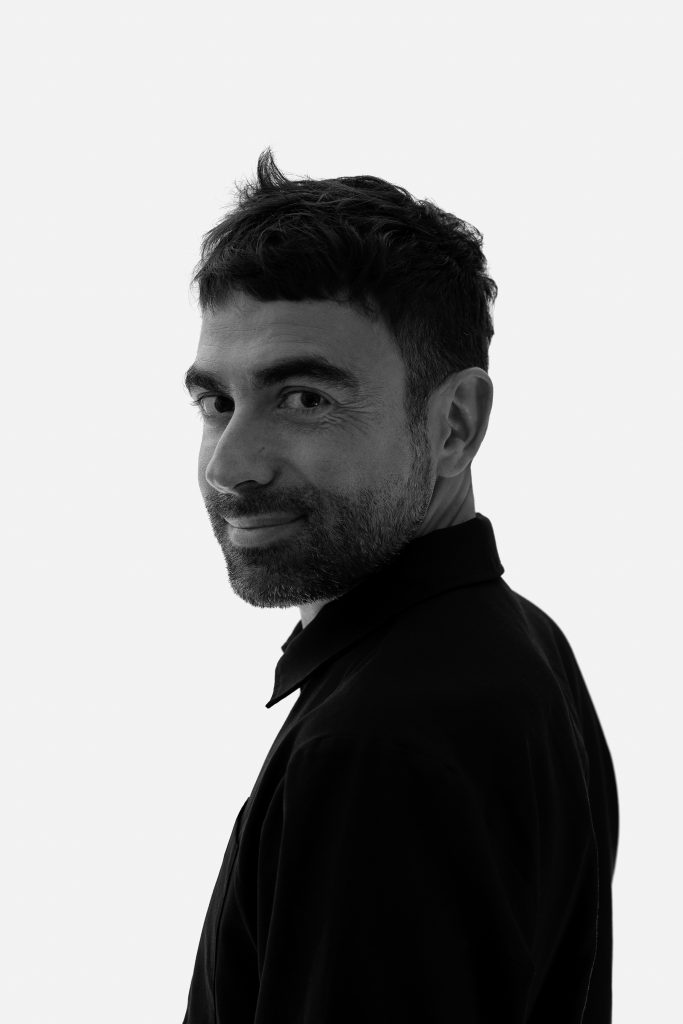
Andrea Benelli: Can you explain how Concéntrico takes place and what the goals of this festival are?
Javier Peña Ibañez: Concéntrico unfolds as a collective experiment in the public realm. For six days, architects, designers, artists, and citizens transform Logroño into an open-air laboratory where new relationships with the city are tested. Our goal is to explore how architecture and design can create temporary scenarios that activate dormant spaces, encourage dialogue, and propose new ways of living together in the urban environment. Ultimately, the festival aims to question how cities can be more inclusive, ecological, and imaginative.
Beyond its temporary interventions, Concéntrico operates as a platform for collaboration between multiple actors: local institutions, international cultural organizations, universities, and social groups actively shape each edition. This network allows projects to emerge from a rich exchange of perspectives, combining experimental design with real urban challenges. The festival is not only a showcase but a process, where ideas are tested at full scale, generating knowledge that can influence urban policies and inspire other cities to rethink how public spaces are conceived, used, and cared for.
Andrea Benelli: Urban space has always been the central focus of your festival. Each project aims to reactivate and enhance spaces that are useful to the community. You seem to emphasize the importance of raising awareness among citizens that the city is a collective asset. Is that correct?
Javier Peña Ibañez: Absolutely. We believe that urban space is not just a backdrop but a living, shared resource. By intervening in unexpected places—empty lots, underused squares, hidden corners—we show citizens the potential of these spaces. The projects spark conversations, and this awareness is crucial for imagining cities as collective assets rather than private commodities. Concéntrico is not just about architecture; it’s about creating a sense of ownership and care among the people who inhabit the city.
This approach also shapes our strategy in response to climate change. In the 2025 edition, we incorporated two vacant lots in the historic center, transforming them into small new gardens that act as green refuges within the dense urban fabric. These spaces not only provided shade and biodiversity during the festival but are designed to remain as part of the city’s climate adaptation strategy, serving as prototypes for future interventions. Their continuity will be reinforced in the 2026 edition, linking temporary experimentation with lasting environmental and social impact.
Andrea Benelli: As mentioned earlier in my brief introduction, this year the festival chose important and certainly very current themes. Can you tell us more about them?
Javier Peña Ibañez: The program of Concéntrico 2025, held in Logroño from June 19 to 24, revolved around four thematic axes—collective food, climate, water, and social and ritual processes—addressed through 24 urban interventions that transformed the city. Food became a way to connect the market hall with the surrounding territory through the project Earth Cooking by JMBAD, where participants shaped ceramics with local clay and shared meals that extended to the vineyards of La Rioja, linking culinary rituals with landscape and community. In the same space, La Cena del Ring turned the Mercado de Abastos into a performative arena, reimagining the act of eating as an emotional exchange and a public gathering.
Water and climate were central to interventions such as Round About Baths by Leopold Banchini Architects, which transformed an overlooked traffic roundabout into a temporary public bath: combining changing rooms, steam rooms, and cold‑water basins around a fountain in the heart of Gran Vía, the installation offered a poetic oasis of cultural and physical refreshment in a car‑dominated intersection. In a similar vein, Monumental Splash by Salazar Sequeiro Medina reimagined the historic Fuente de Espartero as an urban pool, inviting active engagement with water and reframing civic monuments as sites of communal relief and reflection.
Finally, social and ritual processes appeared in provocations like 111 Farolas by Bayona Studio—an avenue-wide grove of recycled streetlamps that transformed light into a medium of memory and collective encounter, reactivating plazas as stages for new rituals and interactions. Together, these projects not only embodied the curatorial themes but deepened Concéntrico’s ongoing dialogues—linking architecture, ecology, ritual, and urban care in response to pressing social and environmental urgencies.
Andrea Benelli: For six days, the city of Logroño was transformed into an open-air workshop where the flow of creativity and thought brought citizens closer to the design process. Urban space thus becomes the stage for collective thinking, capable of transforming the city and bringing citizens closer not only to the territory but also to institutions. How engaged did citizens feel during these six days of workshops?
Javier Peña Ibañez: The citizens were at the heart of the process. Their participation—through visits, dialogues, and even direct involvement in certain installations—was overwhelming. Concéntrico creates a sense of celebration where people feel ownership over their city. They don’t just observe the works; they live them, question them, and sometimes even modify them. This dynamic creates a unique bond between institutions, creators, and inhabitants, showing that urban transformation is only meaningful when it is shared.
Each year, this engagement is strengthened through the collaboration of local associations, neighborhood groups, and professional organizations such as schools, universities, and architectural colleges. These entities not only facilitate participation but also shape the content and focus of the projects. Their involvement ensures that the interventions resonate with real urban needs, while opening processes that extend beyond the festival itself, leaving behind active networks and long-term conversations about the future of the city.
Andrea Benelli: In 10 years of editions, the festival now counts more than 160 urban interventions. Is there a project you feel most connected to? Or one you think had a greater impact?
Javier Peña Ibañez: It’s difficult to choose just one because each project has its own story and impact. Over the years, the conversation that defines Concéntrico has always been a dialogue—one that makes the questions more intense and the answers denser, generating a complexity that has gradually shaped the festival’s direction. This ongoing exchange between designers, institutions, and citizens has been our real engine of transformation.
Within this framework, certain projects have become turning points. Early editions featured interventions that revealed hidden parts of the city, completely shifting how citizens perceived those areas. More recently, everything related to water has redimensioned the project, connecting it to a social reality that cities urgently need to address. These installations—whether dealing with climate adaptation, urban rituals, or ecological awareness—have shown how temporary interventions can resonate deeply and trigger long-lasting conversations about our collective future.
Andrea Benelli: This year you also published your first catalog featuring the projects carried out over the last ten years of the festival—a major milestone. Can you explain how this catalog is structured?
Javier Peña Ibañez: The book, Concéntrico: Urban Innovation Laboratory, celebrates the first decade of the festival and reflects on how architecture and design have shaped our understanding of urban space over these years. It documents more than 150 projects that have transformed Logroño into an experimental laboratory, showing how temporary interventions can generate lasting conversations about the city.
Rather than being just a record, the book is structured as a journey through seven thematic chapters—identity and fiction, heritage and symbolism, temporariness as a social tool, collectivity and cooperation, urban ecologies, playable cities, and the domestication of public space. Each chapter brings together proposals that test new ways of inhabiting and activating the urban realm, connecting contexts, disciplines, and generations. The reader will encounter works by authors who have been key to shaping the festival’s identity—such as Oana Stănescu, Matali Crasset, Gregor Schneider, Konstantin Grcic—alongside emerging practices that have expanded its scope year after year.
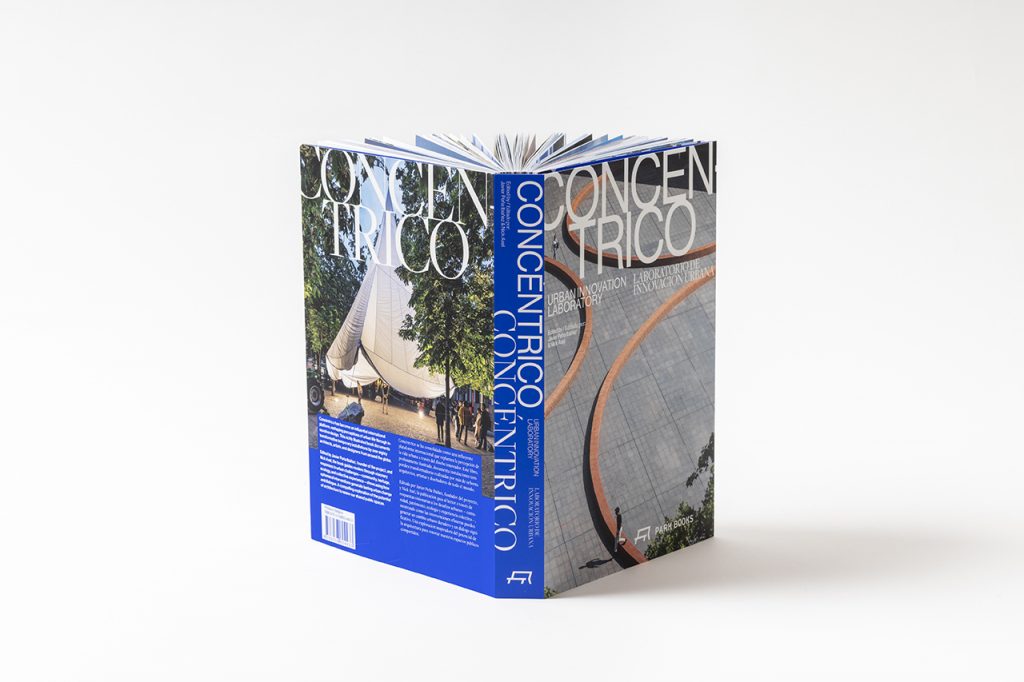
It’s a book that goes far beyond documentation. Over more than two years of work together with Nick Axel, we have delved deeply into the ideas, processes, and questions that have shaped Concéntrico, turning our conversations into a framework to read the festival’s evolution. This shared exploration threads through the pages, revealing not only the context and knowledge produced over a decade but also the many doubts, discoveries, and perspectives that have emerged along the way. Richly illustrated, the book becomes both a reflection on the relevance of architecture and design in the 21st century and an invitation to imagine alternative urban narratives, to see cities as spaces in constant transformation and experimentation.
Andrea Benelli: Have you already started thinking about the next edition of Concéntrico?
Javier Peña Ibañez: Yes, Concéntrico is always evolving. After celebrating our tenth anniversary, we’re entering a new phase where we’ll expand beyond the temporary format. The next edition will introduce the first permanent urban climate island, responding to the climate crisis with a project that combines architecture, ecology, and social use. At the same time, we’ll continue our tradition of temporary interventions and international collaborations, ensuring that the festival remains a place of experimentation and dialogue about the future of our cities.
In addition, starting in September we will launch an international tour to present the book, reconnecting with many of the participants of Concéntrico in each city. The presentations have already been confirmed in London, Madrid, Chicago, Milan, Barcelona, and Paris, turning the book launch into a collective celebration of the ideas and collaborations that have shaped the festival over the past ten years.


